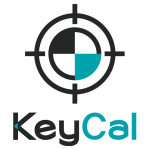About Us

KeyCal specialise in mobile Advanced Driver Assistance System (ADAS) calibrations. We are based in Perth, Western Australia and cover the metro area including Mandurah.
We have been dedicated to ADAS calibrations since the beginning of 2020, but our experience with Electronics and Calibrations date a lot further back.
Glen served in the Australian Defence Force as an Electronics Technician specialising in Navigation and RADAR systems. After leaving the ADF he worked for WesTrac as a Machine Control and Guidance Technician on Caterpillar Autonomous Trucks and later as a Deployment Engineer for Caterpillar. In these roles he commissioned and calibrated Autonomous Trucks as well as installing and commissioning High Precision GPS guidance systems on a wide range of auxiliary equipment including Light Vehicles.
Steven has owned and run a number of businesses over the last 40 years with his most recent being the WA franchise of Mobile Test ‘n’ Cal. MTnC specialise in the calibration of electrical equipment (such as RCD Testers, Insulation Testers, Multimeters, Clamp Meters, PAT Testers etc.) and calibration of a whole range of other equipment including torque, temperature and gas sensor equipment. They are an ISO and NATA accredited company and hold the most accreditations in the calibration field in Australia.
Wayne is a qualified mechanic from the UK who has considerable experience working in the automotive repair industry in Perth. On top of his mechanical knowledge he has nearly a decade of experience of strip and fit work which is a vital asset when it comes to ADAS calibrations.
Tegan handles all of our administration, reception and scheduling of technicians (amongst many other things). You’ll hear her lovely voice when you contact us on 1300 KEY CAL (1300 539 225).
KeyCal – ADAS Calibrations
How does ADAS technology work?
Advanced Driver Assistance System (ADAS) is a collective term for safety technology designed to reduce accidents and increase general road safety for all users.
ADAS technology uses a wide range of devices such as cameras, radar, LiDAR, image processing and computer vision, as inputs for its ADAS calculations.
These systems allow the ADAS software to determine the relative location of the object/vehicle based on the information gathered.
ADAS sensors can be mounted in the radiator grill, glued to the inside of the windscreen, or fitted to the bumpers and mirrors of the vehicle.
Some common examples of ADAS are:
Vehicle Cab:
- Lane Departure Warning System
- Lane Keeping Assist
- Traffic Sign/Signal Recognition
- Night Vision System
- Driver Status Monitor
- Electric Vehicle Warning
- Hill Descent Control
Front:
- Parking Assist
- Adaptive Front/Lighting System
- Adaptive Cruise Control
- Pedestrian Detection
- Emergency Brake
Rear:
- Reverse Image
- Parking Assist
- Rear Collision Warning
Side:
- Surround View
- Blind Spot Detection
Do you have ADAS on your vehicle?
Your local Dealer can advise you what ADAS options there are for your particular vehicle make/model. KeyCal can specifically tell you which ADAS options are fitted to your vehicle by running a vehicle diagnostic scan. This scan will not only show what ADAS options you have installed, but also the current health status of them and any faults or systems out of calibration.
Do you need ADAS Recalibration?
Even if your vehicle isn’t displaying any ADAS fault codes does not mean that it is functioning correctly. A mis-aligned sensor will be providing erroneous information to your system resulting in an inaccurate calculation and resulting reaction by your vehicle. There are countless stories already of vehicles slamming on the brakes at highway speeds due to incorrectly calibrated sensors.
Some examples of when an ADAS calibration should be conducted:
- Windscreen replacement
- Repair or replace the Adaptive Cruise Control (ACC) radar sensor control unit
- ACC radar sensor deviation angle out of normal range
- Adjust position of the ACC radar sensor on the vehicle body
- Repair or replace bumper or radiator grill
- Adjustment that effects the pitch/roll of the chassis (e.g. change of suspension or change in tyre diameter)
What is ADAS camera calibration?
The most common device used for ADAS are cameras.
These cameras need to be calibrated to make sure they are aligned and providing accurate information to the system to base its calculations off.
A camera calibration is performed by placing a target pattern in front of the vehicle at a specified distance and height (each OEM has a differerent pattern and calibration requirements). Once the target pattern is in position the ECM calibration is performed using specialised ADAS calibration software.
